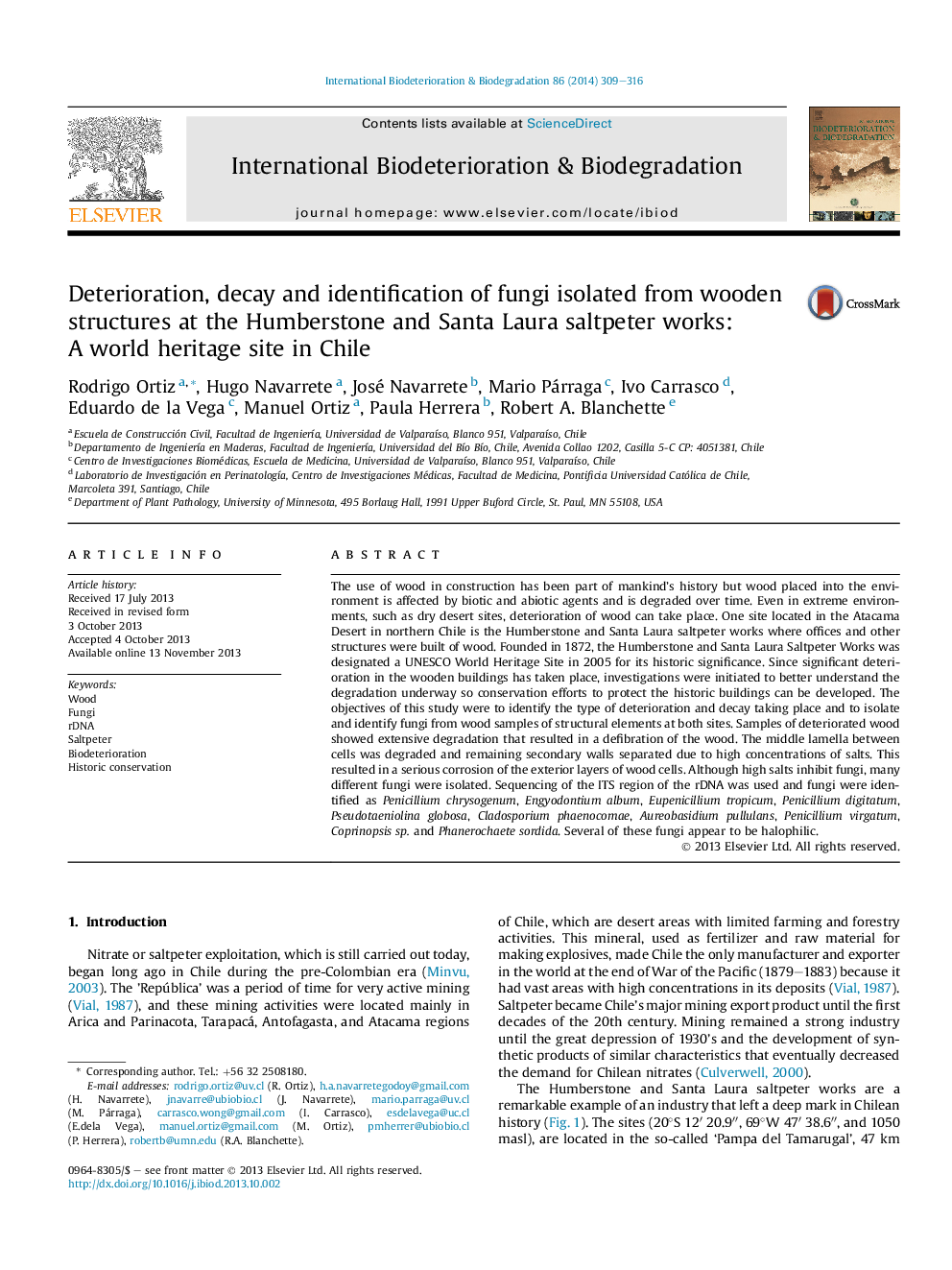| کد مقاله | کد نشریه | سال انتشار | مقاله انگلیسی | نسخه تمام متن |
|---|---|---|---|---|
| 4364817 | 1301725 | 2014 | 8 صفحه PDF | دانلود رایگان |
• Extensive deterioration was found at the “saltworks” world heritage site in Chile.
• An unusual form of deterioration in wood was caused by the chemical action of salts.
• Fungi growing in this extreme environment were isolated from affected woods.
• rDNA sequencing identified ten pure cultures of fungi.
• Several fungi identified appear to be halophilic microorganisms.
The use of wood in construction has been part of mankind's history but wood placed into the environment is affected by biotic and abiotic agents and is degraded over time. Even in extreme environments, such as dry desert sites, deterioration of wood can take place. One site located in the Atacama Desert in northern Chile is the Humberstone and Santa Laura saltpeter works where offices and other structures were built of wood. Founded in 1872, the Humberstone and Santa Laura Saltpeter Works was designated a UNESCO World Heritage Site in 2005 for its historic significance. Since significant deterioration in the wooden buildings has taken place, investigations were initiated to better understand the degradation underway so conservation efforts to protect the historic buildings can be developed. The objectives of this study were to identify the type of deterioration and decay taking place and to isolate and identify fungi from wood samples of structural elements at both sites. Samples of deteriorated wood showed extensive degradation that resulted in a defibration of the wood. The middle lamella between cells was degraded and remaining secondary walls separated due to high concentrations of salts. This resulted in a serious corrosion of the exterior layers of wood cells. Although high salts inhibit fungi, many different fungi were isolated. Sequencing of the ITS region of the rDNA was used and fungi were identified as Penicillium chrysogenum, Engyodontium album, Eupenicillium tropicum, Penicillium digitatum, Pseudotaeniolina globosa, Cladosporium phaenocomae, Aureobasidium pullulans, Penicillium virgatum, Coprinopsis sp. and Phanerochaete sordida. Several of these fungi appear to be halophilic.
Journal: International Biodeterioration & Biodegradation - Volume 86, Part C, January 2014, Pages 309–316
